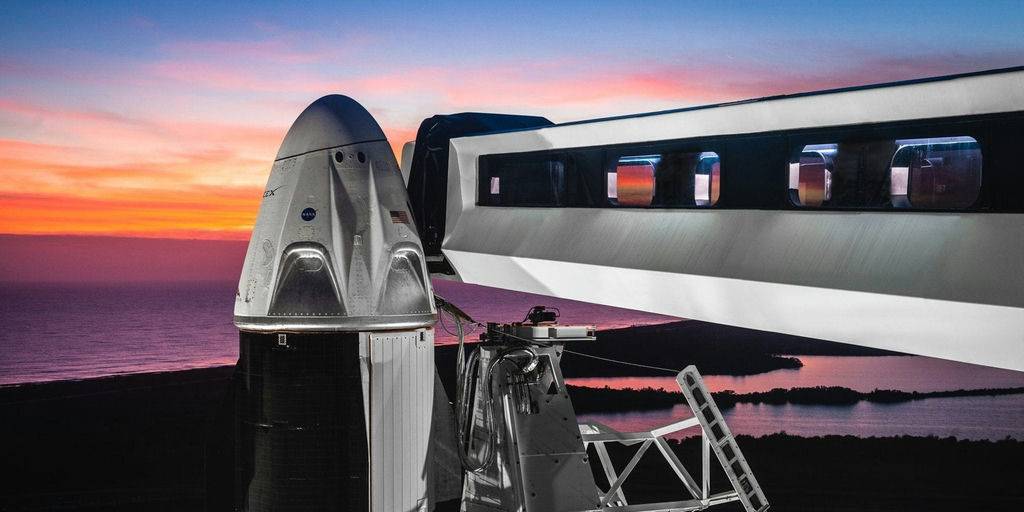Before it can conduct manned missions to the ISS, the Moon, Mars and Beyond, SpaceX has to prove that its Crew Dragon capsule has what it takes to keep astronauts safe during the flight. One last key hurdle in this endeavor is to test the Crew Dragon’s built-in escape system. The launch escape test – which will rely on the capsule’s 8 3D printed SuperDraco engines – with a six-hour launch window was scheduled.
There are two approaches to such escape systems. As Space.com explains, the spacecraft of the Mercury and Apollo eras, as well as the Russian Soyuz capsule that astronauts ride in, relied on a rocket that pulled the spacecraft away from its launch vehicle. In contrast, both the Crew Dragon and Boeing’s Starliner use a built-in system to push the spacecraft to safety.
Embedded within the outer hull of the Dragon capsule are eight engines called SuperDracos, which were among the first engines to ever be 3D printed by Space X to ensure lightweight and the unique capabilities required. If the vehicle’s computer senses that something is amiss during flight, it will trigger these thrusters to fire. Then, the SuperDracos will push the Crew Dragon up and away from the rocket. Once the capsule is at a safe distance from the troubled rocket, the Crew Dragon will deploy its parachutes and land in the Atlantic Ocean, where recovery vessels will retrieve the capsule and the crew.
SpaceX targetted Saturday, January 18 for an in-flight test of Crew Dragon’s launch escape capabilities from Launch Complex 39A (LC-39A) at NASA’s Kennedy Space Center in Florida. This test, which does not have NASA astronauts onboard the spacecraft, is intended to demonstrate Crew Dragon’s ability to reliably carry crew to safety in the unlikely event of an emergency on the ascent.
The new six-hour launch window opened at 8:00 a.m. EST, or 13:00 UTC, on Sunday, January 19 and backup is on Monday, January 20. SpaceX will continue to provide updates as new data becomes available.
The SuperDraco engine firing during a test.
In March 2019, SpaceX completed an end-to-end test flight of Crew Dragon without NASA astronauts onboard, making Dragon the first American spacecraft to autonomously dock with the International Space Station and safely return to Earth.
For this test, Falcon 9’s ascent trajectory will mimic a Crew Dragon mission to the International Space Station to best match the physical environments the rocket and spacecraft will encounter during a normal ascent. However, SpaceX has configured Crew Dragon to intentionally trigger a launch escape after Max Q, the moment of peak mechanical stress on the rocket.
Following Crew Dragon’s separation, Falcon 9 is expected to aerodynamically break up offshore over the Atlantic Ocean. Expected breakup time will vary due to a number of factors, including winds and expected minor variations in vehicle attitudes and positions, but could occur shortly after separation or upon reentry from Earth’s upper atmosphere. In either scenario, a dedicated team of SpaceX Falcon 9 recovery personnel will be staged and ready to begin recovering debris immediately after breakup.
SpaceX’s in-flight demonstration of Crew Dragon’s launch escape capabilities is designed to provide valuable data toward NASA certifying the spacecraft to begin carrying astronauts to and from the International Space Station


